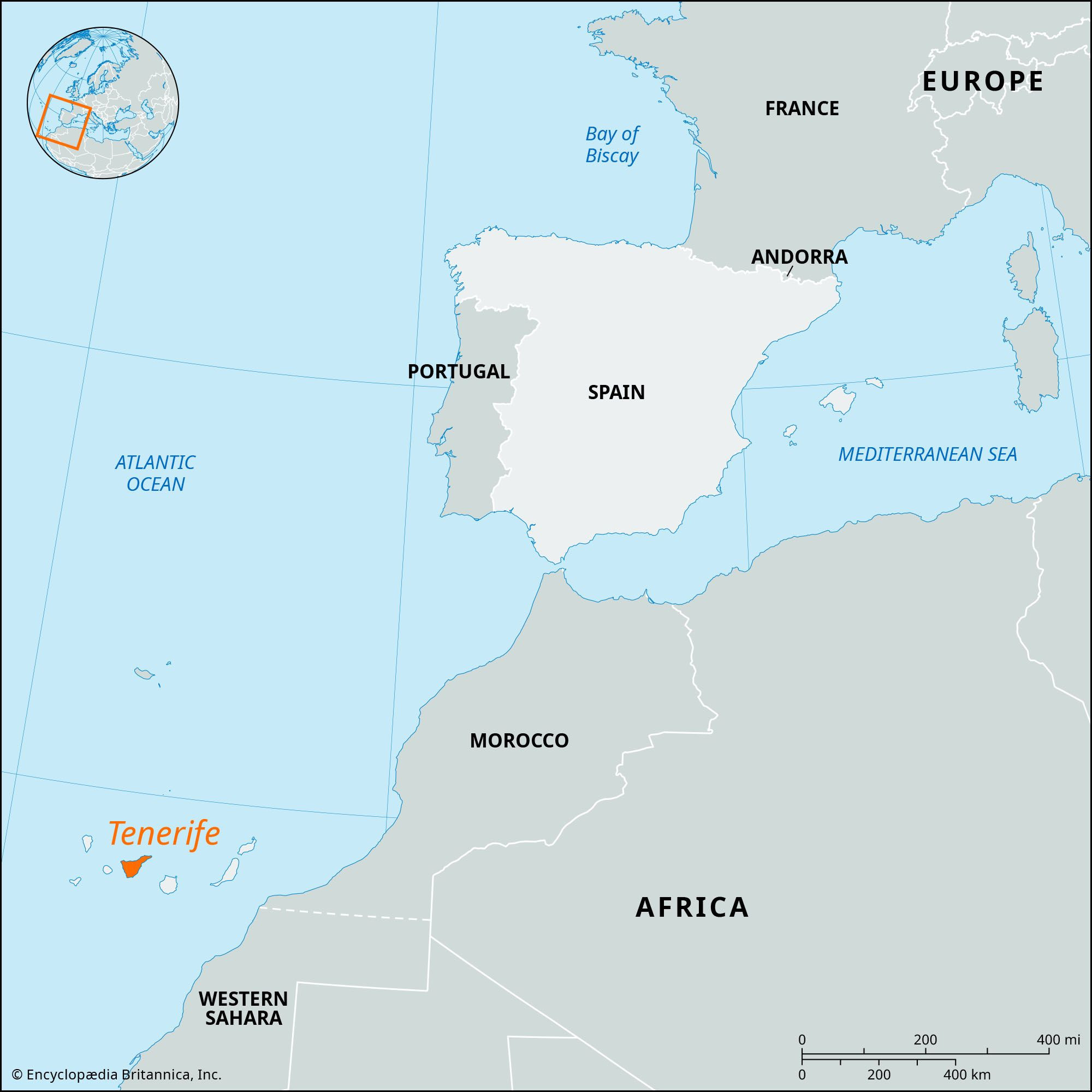Tenerife, a jewel in the Atlantic Ocean, is the largest of the Canary Islands and a captivating destination that draws visitors from across the globe. But Where Is Tenerife exactly? This enchanting island belongs to Spain and is nestled off the northwestern coast of Africa, making it a unique blend of European and African influences.
Geographical Location of Tenerife
Positioned in the Atlantic Ocean, Tenerife is part of the Canary Islands archipelago, an autonomous community of Spain. More specifically, Tenerife is situated opposite the northwestern reaches of Africa. This strategic location provides Tenerife with its famed year-round spring-like climate, making it a popular destination throughout the year. Administratively, Tenerife falls under the Santa Cruz de Tenerife province within Spain.
Volcanic Origins and Topography
The island’s landscape is dramatically shaped by its volcanic origins. Tenerife boasts a striking northeastern part that ascends sharply into a rugged mountain ridge of volcanic creation. An exception is near San Cristóbal de la Laguna, where a corridor-like depression creates the island’s only substantial lowland area.
The larger part of Tenerife is dominated by an immense composite dome, crowned by Teide Peak. Ascending to 12,198 feet (3,718 metres), Teide Peak is not only the highest point in Tenerife but also the highest point in all of Spain. This area remains volcanically active, with historical records noting significant eruptions, such as the devastating event in the 18th century that heavily impacted Garachico town and harbor on the northern coast.
Population Centers on Tenerife
The majority of Tenerife’s population is concentrated on the lower slopes and within a few miles of the coastline. A significant portion of the island’s inhabitants resides in or around Santa Cruz de Tenerife, the bustling capital city. Nearby is San Cristóbal de la Laguna, the island’s former capital and now its cultural heart, home to the esteemed University of La Laguna, established in 1792. San Cristóbal de la Laguna’s historical significance as the first unfortified Spanish colonial town led to its designation as a UNESCO World Heritage site in 1999.
Beyond these major cities, many people live on the intensely cultivated northern slopes, where bananas and vineyards thrive. Key towns in this region include La Orotava, Los Realejos, and Puerto de la Cruz. In contrast, the drier southern coast is characterized by dry farming practices, and camels were historically common for transportation. However, the southern towns, such as Arona, Adeje, and Granadilla de Abona, have experienced substantial growth in the 21st century, largely fueled by the flourishing tourism industry.
Tenerife’s Economy and Accessibility
Agriculture forms a crucial part of Tenerife’s economy, but tourism is a dominant force, especially centered around beach resorts like Playa de Las Américas. To accommodate international visitors, Tenerife has two airports. The original international airport at Los Rodeos was replaced by Queen Sofia Tenerife South Airport in 1978, built in a less fog-prone area following a major aviation disaster in 1977.
In summary, Tenerife’s location in the Atlantic Ocean, as part of the Canary Islands and belonging to Spain, gives it a unique geographical and cultural identity. Its volcanic landscape, population distribution, and thriving tourism industry all contribute to making Tenerife a fascinating island to explore.

